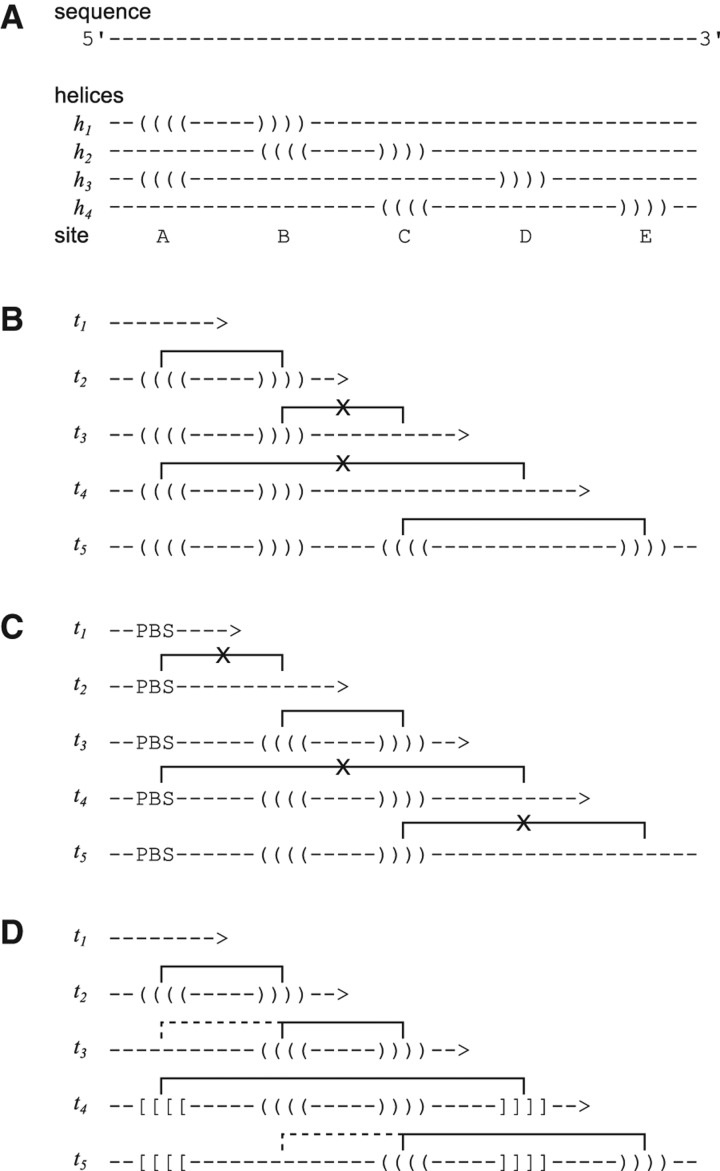FIGURE 2.
Examples of cis and trans interactions during cotranscriptional folding. (A) Hypothetical RNA sequence, capable of forming helices h1–h4, at sites A–E. (B) Transcription of the sequence across time points t1–t5, with the sequential lengthening of the 3′ end. The transcription process limits the available sites for helix formation, imposing an order on helix formation. If an early-formed helix is stable, it can serve to block the formation of subsequent helices by occupying specific sites. (C) Sites may also be occupied due to interactions with other molecules; in this case, a protein-binding site (PBS) occupies site A, leading to a very different result. (D) If early helices are relatively unstable, they can be seen as transient helices that yield to new helices. This mechanism can aid the robust formation of desired structure features. Note that some of the conformations shown above correspond to the ones introduced and defined by Meyer and Miklós (2004). These are as follows: In B, h1 (iī) and h3 (ic) are 3′-trans, where h1 is stable, preventing the formation of h3, and h1 (īi) and h2 (ic) are 3′-cis, where h1 is stable, preventing the formation of h2; in D, h1 (ci) and h2 (iī) are 5′-cis, where h1 is an intermediate for h2, and h2 (ci) and h3 (iī) are 5′-cis, where h2 is an intermediate for h3.

